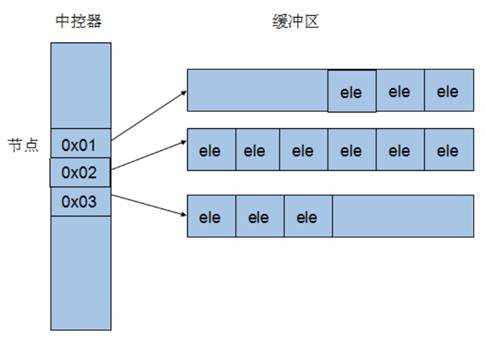C++03-提升
1 模板
1.1 模板的概念
模板就是建立通用的模具,大大提高复用性
模板的特点:
- 模板不可以直接使用,它只是一个框架
- 模板的通用并不是万能的
1.2 函数模板
C++另一种编程思想称为 ==泛型编程== ,主要利用的技术就是模板
C++提供两种模板机制:函数模板和类模板
1.2.1 函数模板语法
函数模板作用:
建立一个通用函数,其函数返回值类型和形参类型可以不具体制定,用一个虚拟的类型来代表。
语法:
1 | template<typename T> |
解释:
template — 声明创建模板
typename — 表面其后面的符号是一种数据类型,可以用class代替
T — 通用的数据类型,名称可以替换,通常为大写字母
1 | //利用模板提供通用的交换函数 |
总结:
- 函数模板利用关键字 template
- 使用函数模板有两种方式:自动类型推导、显示指定类型
- 模板的目的是为了提高复用性,将类型参数化
1.2.2 函数模板注意事项
注意事项:
自动类型推导,必须推导出一致的数据类型T,才可以使用
模板必须要确定出T的数据类型,才可以使用
1 | // 1、自动类型推导,必须推导出一致的数据类型T,才可以使用 |
1.2.4 普通函数与函数模板的区别
普通函数与函数模板区别:
普通函数调用时可以发生自动类型转换(隐式类型转换)
函数模板调用时,如果利用自动类型推导,不会发生隐式类型转换
如果利用显示指定类型的方式,可以发生隐式类型转换
1.2.5 普通函数与函数模板的调用规则
调用规则如下:
如果函数模板和普通函数都可以实现,优先调用普通函数
可以通过空模板参数列表来强制调用函数模板
函数模板也可以发生重载
如果函数模板可以产生更好的匹配,优先调用函数模板
1.2.6 模板的具体化
局限性:模板的通用性并不是万能的,如果T的数据类型传入的是像Person这样的自定义数据类型,也无法正常运行,因此C++为了解决这种问题,提供模板的重载,可以为这些特定的类型提供具体化的模板
1 | //具体化,显示具体化的原型和定意思以template<>开头,并通过名称来指出类型 |
1.3 类模板
1.3.1 类模板语法
类模板作用:建立一个通用类,类中的成员 数据类型可以不具体制定,用一个虚拟的类型来代表。
语法:
1 | template<typename T> |
解释:
template — 声明创建模板
typename — 表面其后面的符号是一种数据类型,可以用class代替
T — 通用的数据类型,名称可以替换,通常为大写字母
示例:
1 | //类模板 |
1.3.2 类模板与函数模板区别
类模板与函数模板区别主要有两点:
类模板没有自动类型推导的使用方式
类模板在模板参数列表中可以有默认参数
1.3.3 类模板中成员函数创建时机
类模板中成员函数和普通类中成员函数创建时机是有区别的:
普通类中的成员函数一开始就可以创建
类模板中的成员函数在调用时才创建
1.3.4 类模板对象做函数参数
学习目标:类模板实例化出的对象,向函数传参的方式
一共有三种传入方式:
- 指定传入的类型 — 直接显示对象的数据类型
- 参数模板化 — 将对象中的参数变为模板进行传递
- 整个类模板化 — 将这个对象类型 模板化进行传递
1 | //类模板 |
1.3.5 类模板与继承
当类模板碰到继承时,需要注意一下几点:
- 当子类继承的父类是一个类模板时,子类在声明的时候,要指定出父类中T的类型
- 如果不指定,编译器无法给子类分配内存
- 如果想灵活指定出父类中T的类型,子类也需变为类模板
示例:
1 | template<class T> |
总结:如果父类是类模板,子类需要指定出父类中T的数据类型
1.3.7 类模板分文件编写
问题:
- 类模板中成员函数创建时机是在调用阶段,导致分文件编写时链接不到
解决:
- 解决方式1:直接包含.cpp源文件
- 解决方式2:将声明和实现写到同一个文件中,并更改后缀名为.hpp,hpp是约定的名称,并不是强制
示例:
person.hpp中代码:
1 |
|
类模板分文件编写.cpp中代码
1 |
|
总结:主流的解决方式是第二种,将类模板成员函数写到一起,并将后缀名改为.hpp
2 STL初识
2.1 STL的诞生
长久以来,软件界一直希望建立一种可重复利用的东西
C++的面向对象和泛型编程思想,目的就是复用性的提升
大多情况下,数据结构和算法都未能有一套标准,导致被迫从事大量重复工作
为了建立数据结构和算法的一套标准,诞生了STL
2.2 STL基本概念
STL(Standard Template Library,标准模板库)
STL 从广义上分为: 容器(container) 算法(algorithm) 迭代器(iterator)
容器和算法之间通过迭代器进行无缝连接。
STL 几乎所有的代码都采用了模板类或者模板函数
2.3 STL六大组件
STL大体分为六大组件,分别是:容器、算法、迭代器、仿函数、适配器(配接器)、空间配置器
容器:各种数据结构,如vector、list、deque、set、map等,用来存放数据。
算法:各种常用的算法,如sort、find、copy、for_each等
迭代器:扮演了容器与算法之间的胶合剂。
仿函数:行为类似函数,可作为算法的某种策略。
适配器:一种用来修饰容器或者仿函数或迭代器接口的东西。
空间配置器:负责空间的配置与管理。
2.4 STL中容器、算法、迭代器
容器:置物之所也
STL容器就是将运用最广泛的一些数据结构实现出来
常用的数据结构:数组, 链表,树, 栈, 队列, 集合, 映射表 等
这些容器分为序列式容器和关联式容器两种:
- 序列式容器:强调值的排序,序列式容器中的每个元素均有固定的位置。
- 关联式容器:二叉树结构,各元素之间没有严格的物理上的顺序关系
算法:问题之解法也
有限的步骤,解决逻辑或数学上的问题,这一门学科我们叫做算法(Algorithms)
算法分为:质变算法和非质变算法。
质变算法:是指运算过程中会更改区间内的元素的内容。例如拷贝,替换,删除等等
非质变算法:是指运算过程中不会更改区间内的元素内容,例如查找、计数、遍历、寻找极值等等
迭代器:容器和算法之间粘合剂
提供一种方法,使之能够依序寻访某个容器所含的各个元素,而又无需暴露该容器的内部表示方式。
每个容器都有自己专属的迭代器
迭代器使用非常类似于指针,初学阶段我们可以先理解迭代器为指针
迭代器种类:
| 种类 | 功能 | 支持运算 |
|---|---|---|
| 输入迭代器 | 对数据的只读访问 | 只读,支持++、==、!= |
| 输出迭代器 | 对数据的只写访问 | 只写,支持++ |
| 前向迭代器 | 读写操作,并能向前推进迭代器 | 读写,支持++、==、!= |
| 双向迭代器 | 读写操作,并能向前和向后操作 | 读写,支持++、–, |
| 随机访问迭代器 | 读写操作,可以以跳跃的方式访问任意数据,功能最强的迭代器 | 读写,支持++、–、[n]、-n、<、<=、>、>= |
常用的容器中迭代器种类为双向迭代器,和随机访问迭代器
2.5 容器算法迭代器初识
STL中最常用的容器为Vector,可以理解为数组
2.5.1 vector存放内置数据类型和遍历
容器: vector
算法: for_each
迭代器: vector<int>::iterator
示例:
1 |
|
2.5.2 Vector存放自定义数据类型
示例:
1 |
|
2.5.3 Vector容器嵌套容器
示例:
1 |
|
3 STL- 常用容器
3.1 string容器
3.1.1 string基本概念
本质:
- string是C++风格的字符串,而string本质上是一个类
string和char * 区别:
char *是一个指针string是一个类,类内部封装了char*,管理这个字符串,是一个char*型的容器。
特点:
string 类内部封装了很多成员方法
例如:查找find,拷贝copy,删除delete 替换replace,插入insert
string管理char*所分配的内存,不用担心复制越界和取值越界等,由类内部进行负责
3.1.2 string构造函数
构造函数原型:
string();//创建一个空的字符串 例如: string str;string(const char* s);//使用字符串s初始化string(const string& str);//使用一个string对象初始化另一个string对象string(int n, char c);//使用n个字符c初始化
示例:
1 |
|
string的多种构造方式没有可比性,灵活使用即可
3.1.3 string赋值操作
功能描述:给string字符串进行赋值
赋值的函数原型:
string& operator=(const char* s);//char*类型字符串 赋值给当前的字符串string& operator=(const string &s);//把字符串s赋给当前的字符串string& operator=(char c);//字符赋值给当前的字符串string& assign(const char *s);//把字符串s赋给当前的字符串string& assign(const char *s, int n);//把字符串s的前n个字符赋给当前的字符串string& assign(const string &s);//把字符串s赋给当前字符串string& assign(int n, char c);//用n个字符c赋给当前字符串
示例:
1 | //赋值 |
总结:string的赋值方式很多,operator= 这种方式是比较实用的
3.1.4 string字符串拼接
功能描述:实现在字符串末尾拼接字符串
函数原型:
string& operator+=(const char* str);//重载+=操作符string& operator+=(const char c);//重载+=操作符string& operator+=(const string& str);//重载+=操作符string& append(const char *s);//把字符串s连接到当前字符串结尾string& append(const char *s, int n);//把字符串s的前n个字符连接到当前字符串结尾string& append(const string &s);//同operator+=(const string& str)string& append(const string &s, int pos, int n);//字符串s中从pos开始的n个字符连接到字符串结尾
示例:
1 | //字符串拼接 |
3.1.5 string查找和替换
功能描述:
- 查找:查找指定字符串是否存在
- 替换:在指定的位置替换字符串
函数原型:
int find(const string& str, int pos = 0) const;//查找str第一次出现位置,从pos开始查找int find(const char* s, int pos = 0) const;//查找s第一次出现位置,从pos开始查找int find(const char* s, int pos, int n) const;//从pos位置查找s的前n个字符第一次位置int find(const char c, int pos = 0) const;//查找字符c第一次出现位置int rfind(const string& str, int pos = npos) const;//查找str最后一次位置,从pos开始查找int rfind(const char* s, int pos = npos) const;//查找s最后一次出现位置,从pos开始查找int rfind(const char* s, int pos, int n) const;//从pos查找s的前n个字符最后一次位置int rfind(const char c, int pos = 0) const;//查找字符c最后一次出现位置string& replace(int pos, int n, const string& str);//替换从pos开始n个字符为字符串strstring& replace(int pos, int n,const char* s);//替换从pos开始的n个字符为字符串s
示例:
1 | //查找和替换 |
总结:
find查找是从左往后,rfind从右往左
find找到字符串后返回查找的第一个字符位置,找不到返回-1
replace在替换时,要指定从哪个位置起,多少个字符,替换成什么样的字符串
3.1.6 string字符串比较
功能描述:
- 字符串之间的比较
比较方式:
- 字符串比较是按字符的ASCII码进行对比
= 返回 0
> 返回 1
< 返回 -1
函数原型:
int compare(const string &s) const;//与字符串s比较int compare(const char *s) const;//与字符串s比较
示例:
1 | //字符串比较 |
总结:字符串对比主要是用于比较两个字符串是否相等,判断谁大谁小的意义并不是很大
3.1.7 string字符存取
string中单个字符存取方式有两种
char& operator[](int n);//通过[]方式取字符char& at(int n);//通过at方法获取字符
示例:
1 | void test01() |
3.1.8 string插入和删除
功能描述:
- 对string字符串进行插入和删除字符操作
函数原型:
string& insert(int pos, const char* s);//插入字符串string& insert(int pos, const string& str);//插入字符串string& insert(int pos, int n, char c);//在指定位置插入n个字符cstring& erase(int pos, int n = npos);//删除从Pos开始的n个字符
示例:
1 | //字符串插入和删除 |
总结:插入和删除的起始下标都是从0开始
3.1.9 string子串
功能描述:
- 从字符串中获取想要的子串
函数原型:
string substr(int pos = 0, int n = npos) const;//返回由pos开始的n个字符组成的字符串
示例:
1 | //子串 |
总结:灵活的运用求子串功能,可以在实际开发中获取有效的信息
3.2 vector容器
3.2.1 vector基本概念
功能:
vector数据结构和数组非常相似,也称为单端数组
vector与普通数组区别:
不同之处在于数组是静态空间,而vector可以动态扩展
动态扩展:
并不是在原空间之后续接新空间,而是找更大的内存空间,然后将原数据拷贝新空间,释放原空间

vector容器的迭代器是支持随机访问的迭代器
3.2.2 vector构造函数
功能描述:创建vector容器
函数原型:
vector<T> v;//采用模板实现类实现,默认构造函数vector(v.begin(), v.end());//将v[begin(), end())区间中的元素拷贝给本身。vector(n, elem);//构造函数将n个elem拷贝给本身。vector(const vector &vec);//拷贝构造函数。
示例:
1 |
|
总结:vector的多种构造方式没有可比性,灵活使用即可
3.2.3 vector赋值操作
功能描述:给vector容器进行赋值
函数原型:
vector& operator=(const vector &vec);//重载等号操作符assign(beg, end);//将[beg, end)区间中的数据拷贝赋值给本身。assign(n, elem);//将n个elem拷贝赋值给本身。
示例:
1 |
|
总结: vector赋值方式比较简单,使用operator=,或者assign都可以
3.2.4 vector容量和大小
功能描述:对vector容器的容量和大小操作
函数原型:
empty();//判断容器是否为空capacity();//容器的容量size();//返回容器中元素的个数resize(int num);//重新指定容器的长度为num,若容器变长,则以默认值填充新位置。 //如果容器变短,则末尾超出容器长度的元素被删除。
resize(int num, elem);//重新指定容器的长度为num,若容器变长,则以elem值填充新位置。 //如果容器变短,则末尾超出容器长度的元素被删除
示例:
1 |
|
3.2.5 vector插入和删除
功能描述:对vector容器进行插入、删除操作
函数原型:
push_back(ele);//尾部插入元素elepop_back();//删除最后一个元素insert(const_iterator pos, ele);//迭代器指向位置pos插入元素eleinsert(const_iterator pos, int count,ele);//迭代器指向位置pos插入count个元素eleerase(const_iterator pos);//删除迭代器指向的元素erase(const_iterator start, const_iterator end);//删除迭代器从start到end之间的元素clear();//删除容器中所有元素
示例:
1 |
|
3.2.6 vector数据存取
功能描述:对vector中的数据的存取操作
函数原型:
at(int idx);//返回索引idx所指的数据operator[];//返回索引idx所指的数据front();//返回容器中第一个数据元素back();//返回容器中最后一个数据元素
示例:
1 |
|
3.2.7 vector互换容器
功能描述:实现两个容器内元素进行互换
函数原型:swap(vec); // 将vec与本身的元素互换
示例:
1 |
|
总结:swap可以使两个容器互换,可以达到实用的收缩内存效果
3.2.8 vector预留空间
功能描述:减少vector在动态扩展容量时的扩展次数
函数原型:reserve(int len);//容器预留len个元素长度,预留位置不初始化,元素不可访问。
示例:
1 |
|
总结:如果数据量较大,可以一开始利用reserve预留空间
3.3 deque容器
3.3.1 deque容器基本概念
功能:双端数组,可以对头端进行插入删除操作
deque与vector区别:
- vector对于头部的插入删除效率低,数据量越大,效率越低
- deque相对而言,对头部的插入删除速度回比vector快
- vector访问元素时的速度会比deque快,这和两者内部实现有关

deque内部工作原理:
deque内部有个中控器,维护每段缓冲区中的内容,缓冲区中存放真实数据
中控器维护的是每个缓冲区的地址,使得使用deque时像一片连续的内存空间

- deque容器的迭代器也是支持随机访问的


